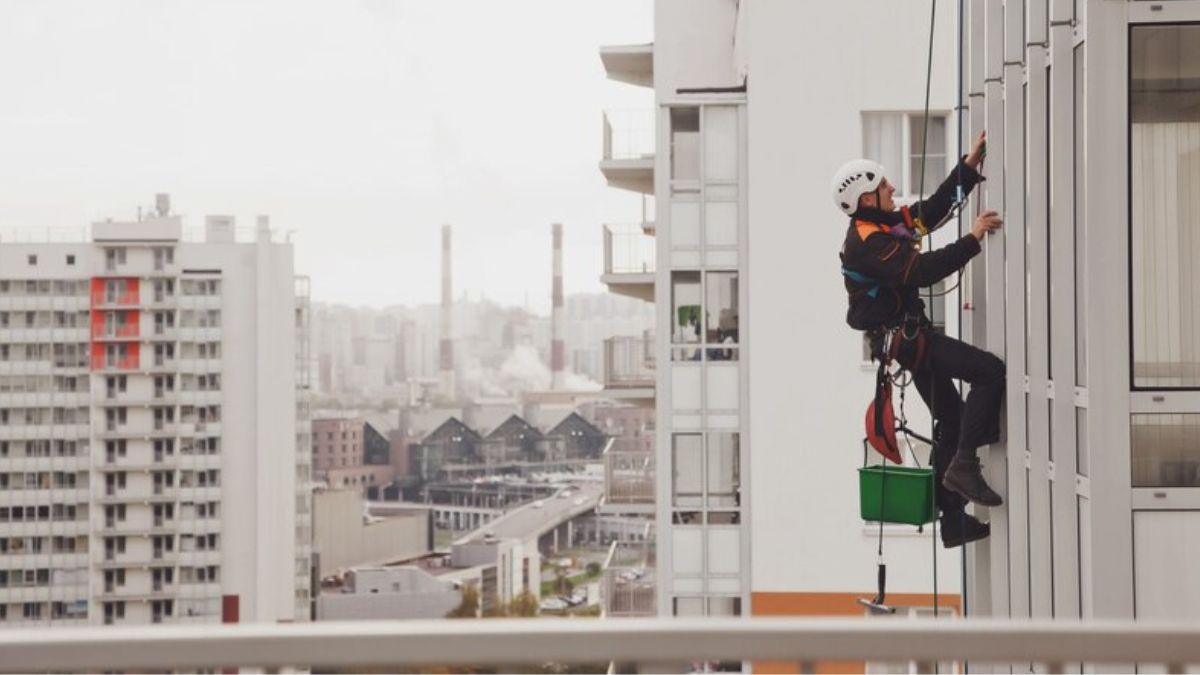Working at height is one of the chief reasons why people have accidents or die while at work. Being up high requires special licensing and certification, as well as insurance. When you, as an employer, decide you need your employees to work in high places – such as tree surgeons, window cleaners, and builders – you then have a duty of care to keep them safe.
This article outlines some of the things you can do to make sure employees are always safe in your company, should you ask them to work from height.
The 8 Ways to Make Working From Height Safer
Safety in the workplace isn’t just about AI and cybersecurity in the modern age. We still rely on the safety gear we always use to keep employees safe. Here are 8 modern and effective ways to protect your employees.
1 – Use a Harness
You could use a two-point safety harness to prevent a fall from height. These devices are excellent for security when employees are scaling buildings or during construction work at height. The two-point harness goes over the shoulders and under the legs. It connects around the waste, giving your employees full support when they work at height.
2 – Conduct Proper Risk Assessments
If you are planning to send employees skywards, then conducting risk assessments is necessary. These assessments should be thorough, and not just pandering to the law. You should identify any potential hazards which could lead to a fall and make employees aware of them. You should also do your best to minimize risks and prevent falls in the first place.
3 – Spend Money on Training
It might seem like a waste of money to provide full working-at-height training for those that will be working high up, but it is not. Firstly, you can protect your employees better if they can identify the dangers they ought to look out for. Secondly, you protect yourself from any future falls. If an employee does decide to open a lawsuit against you, providing your employee with both training and risk assessments should be enough to protect you in a legal sense.
4 – Use Fall Protection Systems
A fall protection system is not as strange as it seems. A great example is in the Yukon, where gold miners must have handrails and guardrails in place or the Department of Energy, Mines and Resources will come out and close down the whole operation. Fall protection systems include safety netting, harnesses, and railings. These act as safeguards against accidental falls.
5 – Avoid Litter and Debris
Leaving things lying around on high up platforms can lead to trips and falls. So, too, can uncleaned spills cause a trip, which then might become exacerbated by falling from height. Keeping all these places tidy and debris-free is akin to keeping aisles clean and tidy in an office building. The less hazards your employees could trip over, the less likely a fall becomes.
6 – Equipment Inspections
Regularly inspecting your equipment can make sure you spot any potential threats before something goes wrong. It is great to have a safety netting and 2-point harnesses in place, but it is essential that you regularly check that equipment to ensure it won’t fail at a crucial moment.
7 – Think About Movement
You should teach your employees about acceptable ways of moving around when they are up high. Fast movements, running, or throwing things, are all definite no-no’s for working at height. Be sure to train everyone to move slowly and carefully, and to not take risks if the underfoot conditions are not stable. For example, a roofer could stand on a loose tile and fall. Good posture can also help prevent falls.
8 – Double-Check, then Triple-Check.
The main thing to remember about keeping your employees safe when they are high up is that you must keep up your vigil, every single day. That means checking everything, every day. It means reminding your workers of their obligations to keep themselves safe up there every morning. It means routinely going over training to make sure everyone is on the same page. If you can do all this, you will have a safer workplace for all.
Keep Workers Safe At Height
There is no alternative other than to keep your employees safe while you ask them to complete tasks high off the ground. If you do not comply with health and safety regulations, you could end up with a huge fine. Worse, you could end up sued by an employee who breaks an arm or leg falling. You could even kill someone. So, tool up before you go out and make safety a priority on your worksite.
ALSO READ: Titan Health and Safety Reviews: Ensuring Workplace Security and Compliance











